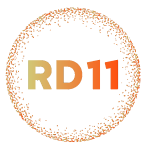Speaker
Description
Light is important for organisms from all domains of life, serving as an energy resource or carrier of information initiating intra- or intercellular signaling. Photosensitive proteins, endowed with a light-absorbing chromophore, enable this. Obtaining direct structural information to understand the underlying molecular mechanisms is not only important for the fundamental understanding of light-driven processes but has practical impact on future developments of e.g. fluorescent proteins for optical nanoscopy or retinal proteins for optogenetics.
For time-resolved crystallography small crystals that can be efficiently photolyzed are required. Serial data collection by means of free-jet sample injection is a convenient way for time-resolved pump probe experiments. In previous experiments employing this technique both at X-ray free-electron laser (XFEL) and synchrotron sources very high pump laser fluences (≫ 100 µJ/mm²) have been used for optical excitation, a regime where multiphoton absorption of the chromophore is highly likely. However, multiphoton excitation differs significantly from the biologically relevant single photon absorption regime and generally results in different effects. This severely compromises the mechanistic interpretation.
We discuss this issue and present how to determine the appropriate photoexcitation intensity for time-resolved pump probe experiments. We discuss how to derive the required pump fluence based on the intensity distribution within the crystals and the jet used for delivering them into the X-ray beam and quantify losses in excitation intensity due to light-matter interaction (scattering, absorption, reflection) of the incident beam before reaching the target chromophores.

